When it comes to roofing, installing roof flashing correctly is an important step that is often missed. Understanding the right way to install roof flashing can make all the difference, whether you have a leaky roof or just want to make your roofing system last longer. This blog post will tell you everything you need to know about roof flashing, from the different kinds of flashing to how to install them and keep them in good shape.
Roof flashing is a thin, waterproof material that is put on the edges, transitions, and joints of your roofing system to keep water out. It protects against water getting into weak spots and makes sure there is a watertight seal.
There are several types of roof flashing commonly used in roofing projects, including:
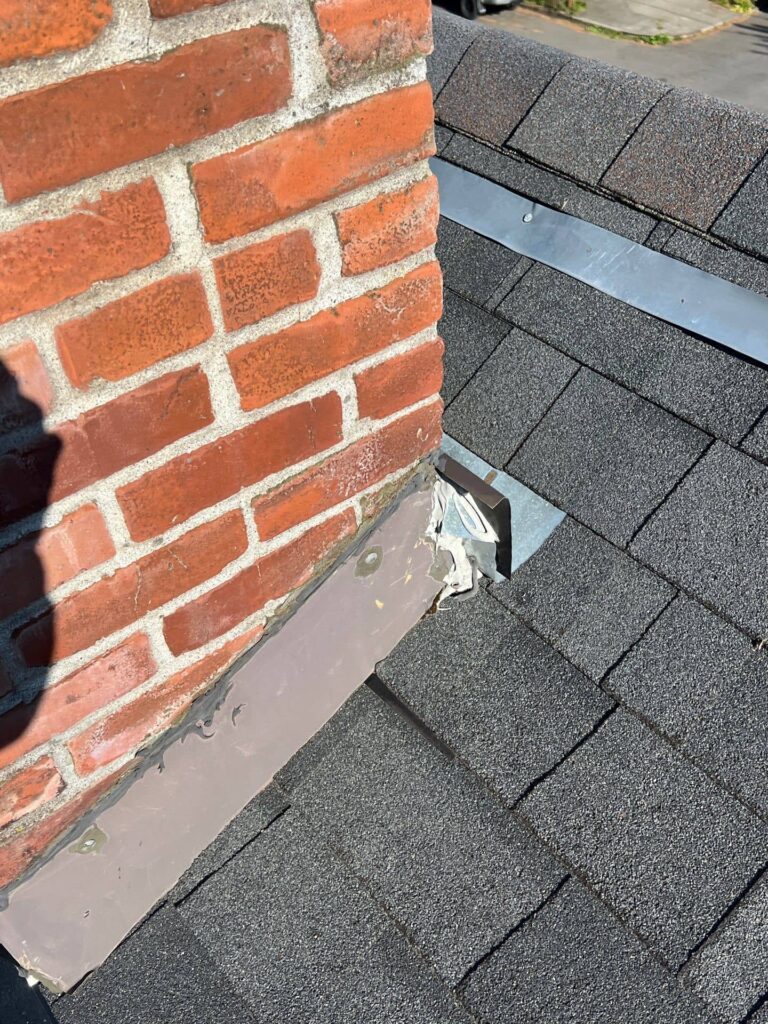
Proper installation of roofing flashing is essential for several reasons:
When it comes to flashing installation, using high-quality materials and following industry best practices is key to ensuring a durable and reliable roofing system.
Before you begin installing roof flashing, gather the following tools and materials:
Proper installation of roof flashing requires attention to detail and precision. Follow these steps to ensure a watertight seal:
| Steps | Description |
| Step 1: Preparation | Inspect the roof and identify areas that require flashing. Clean the surface and ensure it is free of debris. |
| Step 2: Cutting | Measure and cut the flashing material to the appropriate size and shape for the area you are flashing. |
| Step 3: Installation | Secure the flashing in place using roofing nails or screws. Ensure proper overlap and alignment with adjacent materials. |
| Step 4: Sealing | Apply roofing cement or sealant to seal the edges and seams of the flashing, creating a watertight barrier. |
| Step 5: Inspection | Check the flashing for any gaps or loose areas. Make any necessary adjustments to ensure a secure installation. |
To ensure the longevity and effectiveness of your roof flashing, avoid these common mistakes:
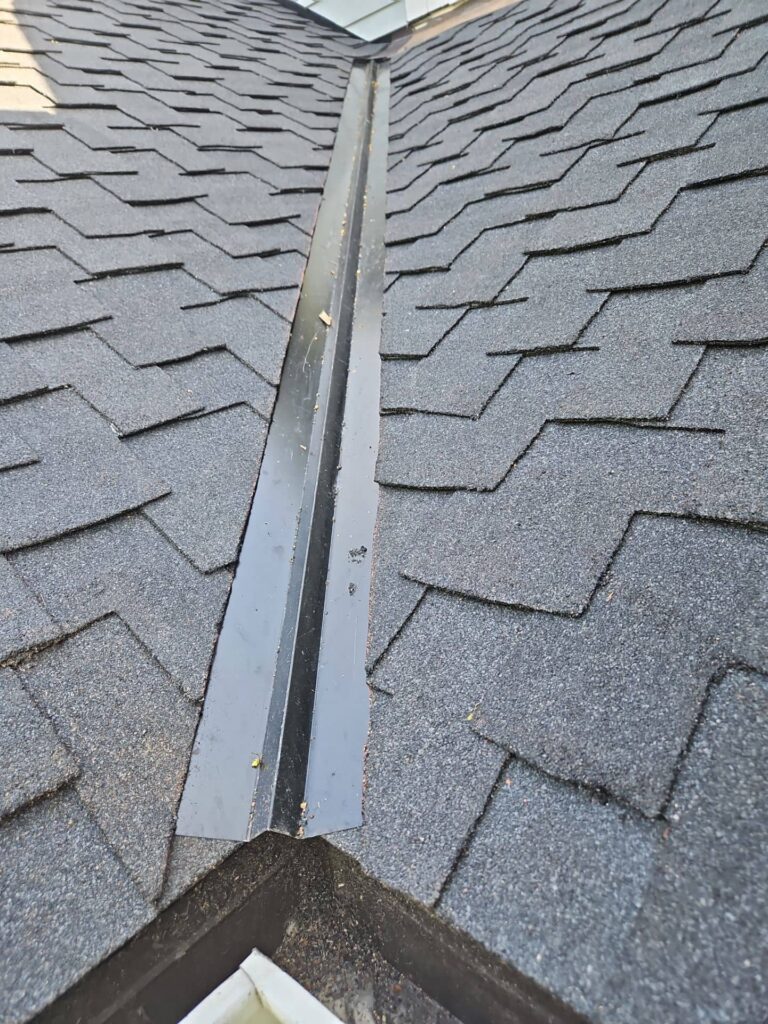
Regular maintenance is key to ensuring your roof flashing remains effective over time. Here are some tips for maintaining your roof flashing:
While some homeowners may opt for a DIY approach to flashing installation, hiring a professional roofer can offer several benefits:
Before deciding whether to tackle a flashing installation project yourself or hire a professional, consider the complexity of the job and your level of expertise in roofing projects.
In conclusion, proper roof flashing installation is a critical component of maintaining a watertight and durable roofing system. By understanding the various types of flashing, following the correct installation steps, and implementing regular maintenance practices, you can ensure your roof remains protected for years to come.
Remember, when it comes to your roof's health, investing in quality flashing roofing installation is a smart choice that can save you time, money, and hassle in the long run. Whether you opt for a DIY approach or hire a professional, prioritize the integrity of your roof flashing for a secure and leak-free home.
If you have any questions or need assistance with your roof flashing repair or installation, feel free to reach out to IBEX Roof for expert guidance and assistance.
When it comes to selecting the ideal roofing material for your home, the choice between Asphalt and Composition Shingles often arises. Each type of shingle has its unique characteristics and advantages, catering to different needs and preferences. In this blog post, we will delve deep into the differences between Asphalt and Composition Shingles, helping you make an informed decision for your roof composition.
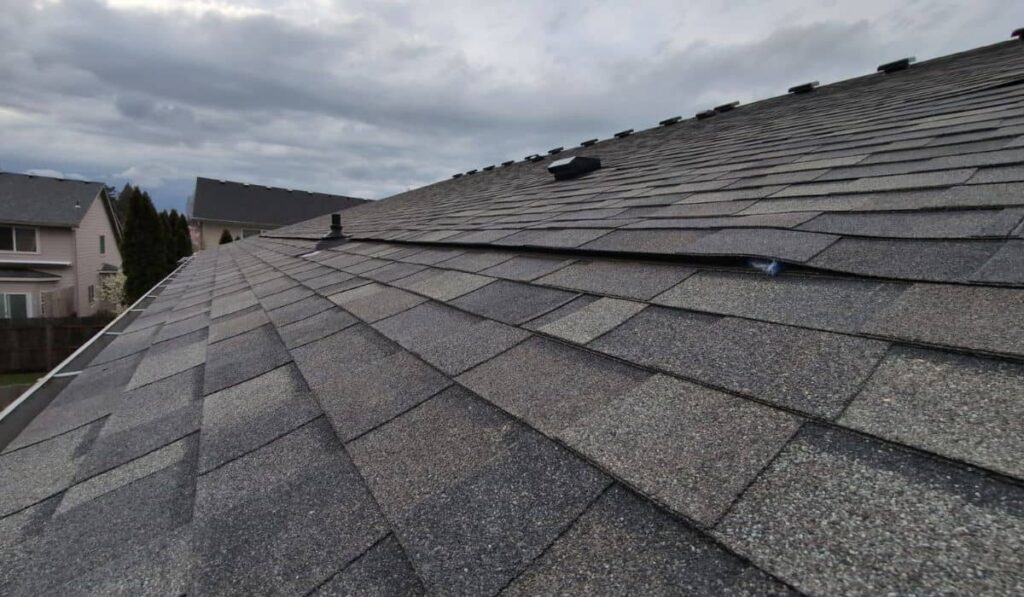
Asphalt shingles are among the most popular roofing materials due to their affordability and ease of installation. They come in two main types: 3-tab Shingles and Architectural Shingles.
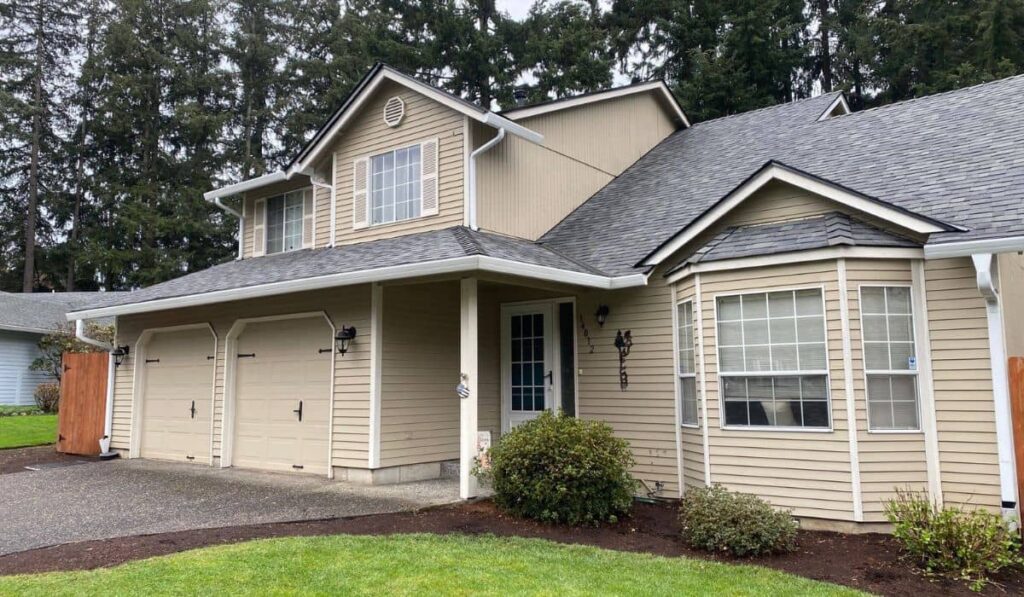
Composition shingles, also known as composite shingles, offer durability and fire resistance, making them a popular choice for homeowners seeking long-lasting roofing solutions.
To further understand the differences between Asphalt and Composition Shingles, let's compare them based on key factors:
| Factors | Asphalt Shingles | Composition Shingles |
|---|---|---|
| Cost | Affordable | Higher initial cost |
| Durability and Longevity | Shorter lifespan | Durable and long-lasting |
| Environmental Impact | Less eco-friendly | Environmentally friendly options available |
| Maintenance Requirements | Minimal maintenance needed | Regular inspection and maintenance required |
When deciding between asphalt and composition shingles for your roof composition, consider the following factors:
On average, composition shingle roofs can last between 20 to 30 years. However, the lifespan of a composition shingle roof can vary depending on factors such as the quality of the shingles, installation techniques, climate, maintenance, and environmental factors. Proper maintenance and regular inspections can help extend the lifespan of a composition shingle roof.
The cost of a composition roof can vary depending on a variety of factors such as the size of the roof, the quality of materials used, and the location of the property. On average, the cost of a composition roof can range from $10,000 to $15,000 or more. It is recommended to get quotes from multiple contractors to get an accurate estimate for your specific roofing needs.
Choosing between Asphalt and Composition Shingles can be a challenging decision. Consulting with a professional roofing contractor can help you assess your specific needs and make an informed choice.
In conclusion, both Asphalt and Composition Shingles offer unique benefits for your roof composition. By weighing the pros and cons of each type and considering your individual requirements, you can select the best roofing material for your home.
Remember, the roof is an essential part of your property, providing protection and enhancing the overall aesthetic appeal. Take your time to research and consult experts before making a final decision on Asphalt vs. Composition Shingles for your roofing needs.
For more insights on shingles roofing, roof shingles types, and luxury asphalt shingles, stay tuned for our next blog post!
Would you prefer a composition shingle roof or an asphalt shingle roof? Let us know in the comments below if you're considering roof replacement or any roofing services!
Choosing the right roofing material for your home can be a daunting task. With so many options available, it can be difficult to decide which one is best suited for your needs. In this blog, we will discuss the 8 most common roofing materials available, their advantages and disadvantages, and how to choose the best one for your home.
The roof is one of the most important components of a building, protecting it from the elements and ensuring its structural integrity. Choosing the right roofing material is crucial to ensuring the longevity and functionality of your roof. There are many factors to consider when selecting a roofing material, including cost, durability, aesthetics, and environmental impact. In this blog, we will explore the 8 most common roofing materials available, and provide guidance on selecting the best one for your home.

Asphalt shingles are the most popular roofing material in the United States, and for good reason. They are relatively inexpensive, easy to install, and come in a wide range of colors and styles. Asphalt shingles can last up to 30 years with proper maintenance, and are resistant to fire and wind damage. However, they are not as durable as some other roofing materials, and can be prone to cracking and warping in extreme temperatures.
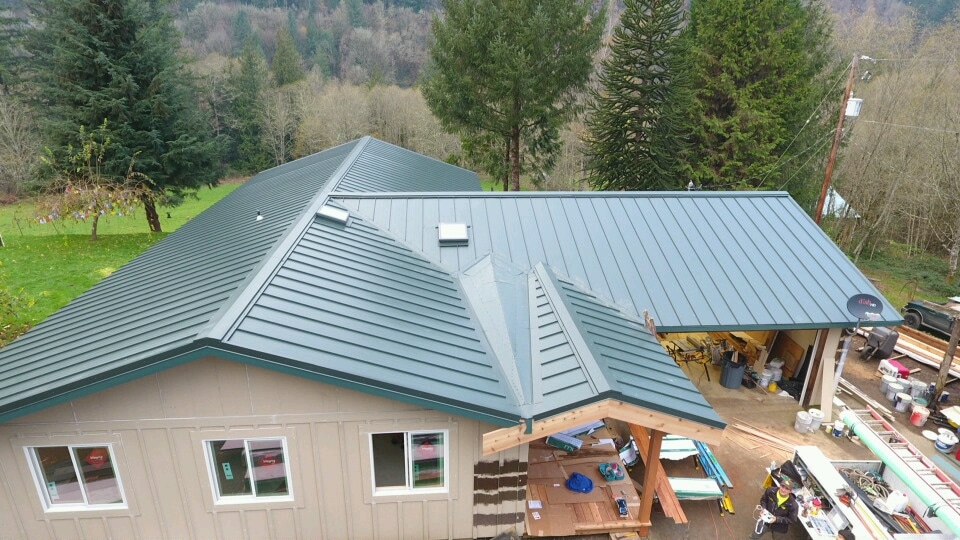
Metal roofing is a durable and long-lasting roofing material that is becoming increasingly popular. It is lightweight, fire-resistant, and can last up to 50 years with proper maintenance. Metal roofing is available in a variety of colors and styles, and is highly resistant to wind and rain damage. However, it can be more expensive than some other roofing materials, and can be noisy during heavy rainfall.
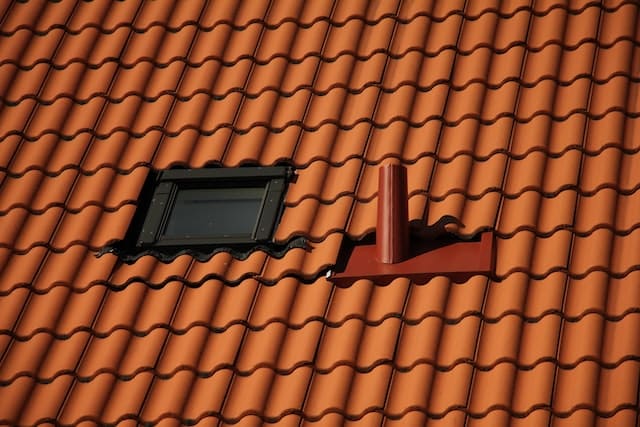
Clay tiles are a popular roofing material in warm and sunny climates, such as the Southwest United States. They are highly durable, fire-resistant, and can last up to 100 years with proper maintenance. Clay tiles are also available in a range of colors and styles, and are highly resistant to wind and rain damage. However, they are heavy and require a strong support structure, and can be prone to cracking and chipping in extreme temperatures.
Concrete tiles are a durable and long-lasting roofing material that is similar to clay tiles in many ways. They are fire-resistant, resistant to wind and rain damage, and can last up to 50 years with proper maintenance. Concrete tiles are available in a variety of colors and styles, and are less expensive than clay tiles. However, they are also heavy and require a strong support structure, and can be prone to cracking and chipping in extreme temperatures.
Slate roofing is a high-end roofing material that is known for its beauty and durability. It can last up to 100 years with proper maintenance, and is highly resistant to wind and rain damage. Slate roofing is available in a range of colors and styles, and is fire-resistant. However, it is also heavy and requires a strong support structure, and can be expensive to install.
Wood shingles and shakes are a traditional roofing material that is still popular today. They are highly durable and can last up to 50 years with proper maintenance. Wood roofing is also eco-friendly and has a natural, rustic look. However, it is not fire-resistant and can be prone to rot, mold, and insect damage over time. Additionally, wood roofing can be more expensive to install and maintain than some other roofing materials.
Synthetic roofing is a newer roofing material that is becoming increasingly popular due to its affordability and durability. It can mimic the look of natural materials like wood and slate, but is much lighter and easier to install. Synthetic roofing is highly resistant to wind and rain damage, and can last up to 50 years with proper maintenance. However, it is not as eco-friendly as some other roofing materials, and may not have the same aesthetic appeal as natural materials.
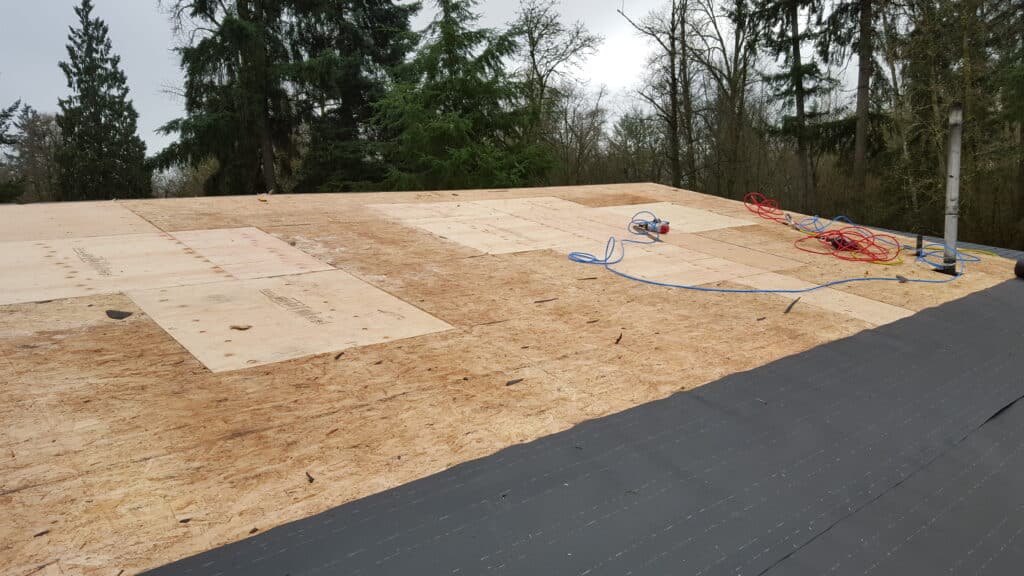
Built-up roofing, also known as BUR, is a roofing material made of layers of asphalt and other materials. It is commonly used on flat or low-slope roofs and is highly durable and resistant to weather damage. BUR can last up to 30 years with proper maintenance, but can be prone to leaking if not installed correctly.
Choosing the right roofing material for your home is an important decision that can impact the longevity and functionality of your roof. By understanding the advantages and disadvantages of each material, you can make an informed decision that meets your needs and budget.
Asphalt shingles can last up to 30 years with proper maintenance.
Some of the most eco-friendly roofing materials include metal, slate, and clay tiles.
The cost of installing a metal roof can vary depending on the size of the roof and the type of metal used, but can range from $7 to $12 per square foot.
Clay tiles can last up to 100 years with proper maintenance.
It is possible to install synthetic roofing over existing shingles, but it is generally recommended to remove the old shingles first for best results.
Are you building a new roof or reconstructing the old one? We’re sure you’ve put a lot of thought into getting the perfect material for your shingles for proper ventilation, insulation, and waterproofing. However, with this comes another important question: Do I need to install dark or light shingles?
We say, go for the color you want, whether dark or light, based on the overall paint color of your house. However, many people are of the opinion that light shingles are better for energy efficiency. How true is that? And what happens if you get dark shingles instead of light ones? Let’s explore!
We have made side-by-side comparisons of dark and light shingles based on certain factors:
It is said that the color of your shingles can affect the temperature of your home. For instance, light-shaded shingles deflect sunlight, dropping the internal temperature by a significant level. On the other hand, dark-colored shingles absorb heat and keep your house warm. While it’s possible there may be some tiny truth to these observations, it’s not enough to make a difference. Insulation is the first line of defense in creating an energy-efficient home. While it’s important to have a roof that is well-ventilated, the color of your roof has little effect on how comfortable your home is.
When choosing the color of shingles for your roof, you have to consider the overall paint color of your house. While many believe light shingles go best with light-colored houses and dark shingles look great on dark-colored houses, we disagree! We believe that there should be a contrast. For instance, if your house is painted in a lighter shade, dark shingles would look more pronounced, and vice versa. However, there is no hard and fast rule about choosing the color of shingles. You can go for whichever color you like, based on your taste and preference.
Another point of debate between dark and light shingles is their durability. People believe that dark shingles have a longer lifespan compared to light shingles. Mainly because darker shades can tolerate more heat, live through snow, don’t fade quickly, and are good at hiding imperfections. However, there’s no proof to back this fact. Color has nothing to do with longevity. If your roof is properly ventilated and has a place from where the heat can escape, it will last longer, regardless if it has light or dark shingles.
Dark shingles or light shingles? Actually, we even offer options that have a combination of both. We think your choice of the color of shingles depends on your personal preference and what looks aesthetically pleasing with the overall paint color of your house.
If you have always dreamed of a house with red shingles, go for it! If you think light grey or white would make your house appear minimalistic and chic, get light shingles! If you feel blended colors like dark grey go better with the style of your home, they really do! Just go with whatever is suitable for your home. Regardless of which option you choose, our team at IBEX Roof will make sure that your home looks great.
The Pacific Northwest is known for having a temperate oceanic climate with lots of rain and wind. Therefore, PNW residents usually build roofs that can handle moisture and have good drainage. While there are many types of roofs, including concrete, cedar shakes, metal, slate, and asphalt, the 3 most popular roofing types in PNW are:
Let’s go over the properties of each type and see why they are so popular among the people of PNW.
Asphalt shingles are the most common roofing option in the Pacific Northwest. They are considered the most versatile type of roofing, available in a variety of different colors and adding a clean and aesthetic look if installed correctly. To build an asphalt roof, you need a fiberglass mat, on top of which the shingles are installed, and a layer of mineral granules is added as a finishing touch.
There are three main types of asphalt shingles:
Even just a decade ago, when people thought of metal roofs, they would think of a shed or outside buildings. However, metal roofing is becoming quite popular in the Pacific Northwest. This is mainly due to its water-resistant properties and also because it is now available in different colors and styles. Metal roofs are one of the best types of roofing because they are unaffected by rain and snow due to closely interlocked panels. They are lightweight, easy to install, deflect heat, and can last for more than 50 years. Plus, they can also be designed to look like wood shake and slate to make your home look aesthetically pleasing.
Cedar shake roofs have been around for more than 300 years and are another popular roofing type in the PNW. They are the pioneers of roofing, giving your home a luxury look and increasing its value. Cedar roofs are expensive compared to other roofing options, but they have a low maintenance cost, save energy, and provide optimum insulation and deflection. However, cedar roofs are prone to mold growth if not installed correctly. But, if you treat the wood with products designed to keep mold and bacteria at bay, they can easily last for 30 to 50 years with annual maintenance.
Living in the PNW means building roofs impervious to rain and wind. Although you will find houses with several different roofing types, asphalt shingles, metal, and cedar shake roofs are the most viable options in the region. If you’re not sure how to choose a roofing type that suits you best, IBEX Roof is here to help. We can find you the right match based on your budget, maintenance capability, and preference!
Are you tired of dealing with frequent repairs and replacements for your traditional roof? Do you want a roofing solution that is not only durable but also energy-efficient and visually appealing? If so, it may be time to consider a metal roof. Metal roofing has gained increasing popularity in recent years due to its numerous advantages over traditional roofing materials.
In this blog post, we will explore the reasons why metal roofs have become a favorable choice and address common misconceptions associated with them. Read on to discover if a metal roof could be the perfect solution for your home.
Before delving into the benefits of metal roofing, it's important to understand the issues commonly faced with traditional roofing materials, such as asphalt shingles, wood shakes, clay, or concrete tiles. These materials often require frequent repairs or replacements, leading to additional costs and inconveniences.
Wood shakes and tiles are susceptible to rot, warping, and insect damage, making them less durable in the long run. Additionally, clay or concrete tiles are heavy and may require additional structural support for adequate installation.
In recent years, metal roofing has gained significant traction as homeowners seek a reliable and long-lasting roofing option. Let's explore the advantages that have contributed to the rising popularity of metal roofs:
Metal roofs are known for their exceptional durability. Unlike traditional roofing materials, metal roofs can withstand extreme weather conditions, including high winds, heavy snowfall, and hail. With a properly installed and maintained metal roof, you can expect it to last up to 50 years or more. This longevity surpasses that of asphalt shingles, which typically last around 20 to 30 years.
Metal roofs are highly energy-efficient, helping homeowners reduce their carbon footprint and energy bills. The reflective properties of metal significantly reduce heat absorption, keeping your home cooler in hot climates.
This reduces the load on your HVAC system, leading to energy savings. Additionally, metal roofs can be installed with added insulation, further enhancing energy efficiency and comfort.
Gone are the days when metal roofs were limited to industrial or agricultural buildings. Nowadays, metal roofs come in a variety of styles, designs, and colors. You can choose from different metal roof colors to perfectly match the exterior of your home, whether you prefer a classic or contemporary look.
Metal roofs can mimic the appearance of shingles, tiles, or even a sleek standing seam metal roof. The versatility in design ensures that you can achieve the desired curb appeal for your home.
Investing in a metal roof not only offers long-term benefits but also enhances the value of your property. Potential homebuyers recognize the durability and low maintenance aspect of metal roofs, making it an attractive feature when it comes time to sell your home.
One of the myths associated with metal roofs is that they are noisy during rainfall. However, this is not the case. With advancements in insulation and soundproofing technologies, the noise generated by raindrops hitting a metal roof is no louder than that of other types of roofing materials.
Contrary to popular belief, metal roofs are not more prone to lightning strikes compared to traditional roofs. In fact, the non-combustible nature of metal makes it a safe option in areas prone to wildfires. Metal roofs have a Class A fire resistance rating, offering excellent protection.
Apart from their durability and aesthetics, metal roofs boast several environmental benefits:
While the upfront cost of metal roofs may be higher than traditional options like asphalt shingles, the long-term savings they offer outweigh the initial investment. Metal roofs require minimal maintenance, reducing repair costs significantly. Moreover, metal roofs have a longer lifespan, eliminating the need for costly replacements every few decades.
It's also worth noting that some insurance providers offer discounts for homes with metal roofs due to their durability and resistance to weather-related damage. Additionally, certain tax incentives may be available for homeowners who choose to install energy-efficient metal roofs.
Metal roofs can be made from various materials, each with its own advantages and considerations:
| Material | Advantages |
| Standing Seam | - Provides sleek and modern aesthetics |
| - Excellent resistance against water infiltration | |
| - Can accommodate thermal expansion | |
| Metal Shingles | - Resemble traditional roof materials like asphalt shingles |
| - Lightweight and easy to install | |
| Metal Tiles | - Highly durable and long-lasting |
| - Provides a classic, elegant look | |
| Corrugated Metal | - Ideal for agricultural or industrial buildings |
| - Budget-friendly option |
Installing a metal roof requires careful consideration of certain factors:
To ensure the best results, it's essential to work with reputable and experienced contractors for metal roof installation. Improper installation can compromise the performance and durability of the roof.
Regular maintenance involves clearing debris, inspecting for any loose screws or damaged panels, and promptly addressing any issues to prevent further damage. Additionally, applying a metal roof sealant can provide extra protection against leaks and extend the lifespan of your metal roof.
Hearing from others who have switched to metal roofs can provide valuable insight into their experiences. Here are a couple of success stories:
Metal roofs have undeniably established themselves as a superior roofing option, offering durability, energy efficiency, and numerous design possibilities.
Despite initial cost considerations, the long-term benefits outweigh the investment. Additionally, metal roofs contribute to sustainability efforts through recyclability and reduced energy consumption. By choosing a metal roof, you can enjoy peace of mind, aesthetic appeal, and long-lasting protection for your home.
Consider all these factors and consult with a professional to determine whether a metal roof is the right choice for you.
After talking about roof vents all month, we thought it would be a good idea to go over the different roof ventilation options out there. Every house is different and there isn’t a single type of roof vent that works perfectly for every home. It is important for every home to have a properly vented roof, though. Some benefits of having roof vents include:
While there are a few different roof ventilation types available, the three main categories are intake, exhaust, and flappers.
Intake vents allow outside air into your attic or other ventilation spaces. The main types of intake vents we install are bird blocks, edge vents, or smart intake vents.
Bird blocks: These are also known as soffit vents because the vents are located underneath the eaves of your roof. This is only possible if your home has soffits, as some older houses don’t have them at all.
Edge vents: Some homes may not have room for bird blocks underneath their eaves, so an edge vent is the next best solution. Edge vents attach at the lower edge of your roof.
Smart vents: Smart vents combine ridge and soffit venting and are usually installed underneath the first layer of shingles at the edge of your roof. It’s most ideal to install when you’re installing a new roof or replacing an old one.
Intake vents work best when they are paired with exhaust vents. Exhaust vents are what direct airflow from the inside out. Common types of exhaust vents include ridge vents, box vents, and electric attic fans. We do not recommend electric attic fans because they can end up pulling air in from your exhaust vents instead of your intake vents.
Ridge vents: Ridge vents are a popular choice when it comes to exhaust vents because they allow continuous airflow and blend in seamlessly with your roof. They are installed underneath your roof’s ridge cap. These are the way to go if you are installing a brand new roof but are not easy to retrofit on existing roofs.
Box vents: Box vents are more visible on your roof than ridge vents but are easier to install on an existing roof. These are cuts in your roof that have a cover over them. You will need multiple box vents, depending on the size of your home, to ensure proper air exhaustion. Otherwise, your roof may be underventilated.
Flappers are dedicated exhaust vents, usually for bathrooms and kitchens. They only open when you turn on the fan switch so air won’t circulate between your other roof vents. Flappers help exhaust the air from high-moisture rooms out of your attic to prevent mold, mildew, and rot.
Some homes don’t have any ventilation at all when they need it. Other homes might have a few vents installed, but not enough to facilitate adequate airflow. Call IBEX Roof today at 360-218-3104 if you need guidance over different roof ventilation options for your home.
Most people know that asphalt shingles cannot be painted over if you want to change the color of your roof. But can you paint a metal roof? Painting a metal roof might be something a homeowner would consider doing to a very old roof, but it’s usually unnecessary. If you’ve had a metal roof installed by IBEX Roof, your panels come with a 40-year paint fade warranty! That means you don’t have to worry about painting your roof for at least the next 40 years.
After 40 years, you may consider painting your metal roof as a way to prevent a full-on roof replacement. Painting may be an option to help refresh your roof if it looks faded. It can also be used to re-seal an old roof to prevent rusting or eroding from rain, snow, and ice. However, we highly recommend getting a roof inspection before considering a new coat of paint on your roof. When you have an old roof, color fading is only one of the signs of roof deterioration. An inspection will make sure to catch any repairs that need to be made or to fully assess whether or not you’ll need a roof replacement.
Like any type of material, there are ones that are cheaper and ones that cost a little more. One of the most important qualities in a metal roof panel is the type of paint coating it has; this is not an area you want to skimp on cost! Avoid installing metal panels on your roof that use polyester-based paints. This type of paint fades in only a few years and increases the chance of your roof being exposed to rust more quickly. Installing these types of panels may like a cheaper option at first, but you will only end up paying more to repaint and repair it. Or, worse, you may end up needing to replace your roof sooner than later!
At IBEX Roof, it’s crucial for us to use high-quality roofing materials that can withstand the temperamental weather patterns of the Pacific Northwest. That’s why we use metal panels painted with Kynar500 paint. This type of coating on the panels is so durable that there is no need to think about ever re-painting your metal roof.
There are several reasons why we don’t recommend homeowners paint their roofs on their own. First, metal roofs are easier to slip on than other roof materials. We never recommend untrained professionals to climb onto their roof, especially if it’s a metal one. Second, there are some metal roofs that can get easily damaged if you walk on it the wrong way.
If you are worried that your metal roof needs repainting, call IBEX Roof’s friendly office to schedule an inspection! Our process involves a thorough evaluation checklist. After inspecting at your roof, we will let you know your options to ensure your roof lasts as long as possible. Give us call today at (360) 218-3134.
One of the best reasons to consider a metal roof is that they require very little maintenance. Like any roof, you should always avoid allowing debris to build-up on top and trim back any overhanging tree branches. While that is probably the biggest maintenance rule to follow, here are a few more tips to make sure you get the most life out of your metal roof.
DO clean the gutters: Gutters are an important part of your roofing system that helps to properly shed water away from your home. Clogged gutters will cause water to back up and potentially damage your roof’s foundation. In the winter, cold temperatures may also cause water to freeze and expand in small spaces under the metal, damaging your roof.
DO keep an eye out: Not only can excess debris create scratches on your roof, but it could also break down the metal coating more quickly. Exposed metal on your roof can cause ugly rust stains, which can negatively affect your home’s curb appeal. Fall and spring are often opportune times to take a look at your roof to make it is in good shape. In addition to debris, be on the lookout for any stains, scratches, dents, and loose fasteners, or seam separation. The sooner you catch any problems, the easier and less expensive it will be to fix!
DO get your roof inspected: As your roof gets older, always remember to get it inspected! An annual inspection will suffice to make sure any small repairs are fixed. This will ensure a long life for your roof and will also keep your roofing budget to a minimum; it’s a lot cheaper to repair an issue while it is small than it is to replace a roof because your problem got too big. You should also consider an inspection after major storms or when there are extreme weather conditions.
DON’T walk on your roof: For obvious safety reasons, you should never walk on your roof if you don’t have to. When it comes to metal roofs, a trained professional will know how to do so without bending or puncturing any part of the roof. Any small dent can be an eyesore, so it’s important to know where to step! Metal roofs can also be more slippery than your average asphalt roof, even when it’s dry. This makes it even more dangerous to walk on and it’s best to avoid going on your roof when you can.
DON’T pressure wash: Maintaining a metal roof may include a light cleaning, but NEVER pressure wash your roof! With asphalt roofs, pressure washing will wash away the granules that give shingles their longevity. Although metal roofs don’t have granules, pressure washing can still damage their metal coating. You should also avoid using abrasive cleaners or solvents that may break down the paint and reduce the lifespan of your roof.
DON’T wait to get repairs: If you see something wrong with your roof, do not wait to get it fixed. Often, the longer you wait, the bigger a problem it becomes, which will end up only costing you more money. It’s possible that what could have been a small repair turns into an entire roof replacement!
IBEX Roof is here to be your long-term roofing team. We’re here for more than just emergencies and roof replacements; we do everything we can to make sure your roof lasts as long as possible! Our team uses a thorough checklist for all roof evaluations to make sure nothing is missed. If we see any underlying problems with your roof, we will provide you with options that fit both your needs and budget. To schedule a roofing inspection today, give our friendly office a call at (360) 218-3108.
We’ve mentioned how metal roofs are a wonderful long-term investment for your home. A big part of that reason is their durability and longevity. Metal roofs can withstand extreme weather conditions and don’t require frequent maintenance or replacement. We’ll go over how long you can expect your metal roof to last, as well as different factors that can affect your metal roof lifespan.
Even though a metal roof will cost more than an asphalt roof, it should also last you almost twice as long, reducing the number of times you’ll have to pay for a replacement. That’s why metal roofs are worth considering if you plan on living in your home for the long-term. The longevity of a metal roof will certainly justify its cost, although you’ll also want to a few other careful considerations when you’re planning on making that investment.
If a metal roof (or any roof, for that matter) is improperly installed, it most definitely will not last as long as you would expect. In fact, it could start leaking right away, and you’ll end up paying more to repair or even reroof. The installation process for metal roofs and asphalt roofs are not the same; metal panels are a lot larger to work with than asphalt shingles, so there is a lot less room for error! That’s why it’s crucial to find a roofer that has experience in metal roofing.
There are all sorts of metal roofing materials out there. Some will be better for roofs with lower slopes while others may have a shingled or commercial look. Your roofer may recommend a certain type of metal roof depending on the needs of your home. But generally, no matter what type of metal roofing you choose, make sure it comes with a great warranty. There are some metal panels that have a polyester-based paint that fades quickly. At IBEX Roof, we use metal panels that are coated with Kynar500, which is a very durable paint coating that comes with a 40-year paint fade warranty.
IBEX Roof is here to be your friendly neighborhood roofer! Whether it is a roof repair, a replacement, or a simple inspection, we love serving our community. Our mission is to offer the best service to our customers, which includes taking time to answer your questions and guiding you through the roof work we perform on your home. Check out our reviews on Facebook and call our office staff at 360-218-3108 to schedule an appointment!